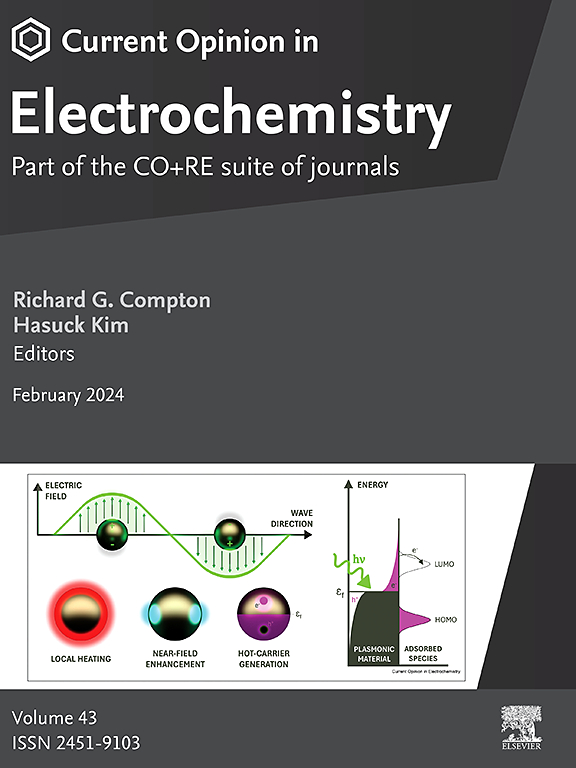塑造下一代熔融沉积建模三维打印电化学(生物)传感:绘制现实的地平线
IF 6.9
2区 化学
Q1 CHEMISTRY, PHYSICAL
引用次数: 0
摘要
三维(3D)打印作为一种制造工具的出现,彻底改变了定制电化学(生物)传感器的发展,提供了卓越的设计灵活性,成本效益和快速原型。在增材制造技术中,熔融沉积建模(FDM)以其经济实惠、易于使用和导电丝的可用性而脱颖而出,为生产具有巨大分析潜力和能力的定制电极提供了一种新方法。这一观点对fdm - 3d打印作为设计和开发电化学(生物)传感器、解决材料配方、电极结构、表面改性策略、分析性能和新兴应用的技术的当前机遇和局限性进行了批判性概述。确定并讨论了当前的挑战和克服这些挑战的方向,为下一代fdm - 3d打印电化学(生物)传感器绘制了现实的地平线。本文章由计算机程序翻译,如有差异,请以英文原文为准。
Shaping the next-generation of fused deposition modeling three-dimensional-printing-based electrochemical (bio)sensing: Drawing a realistic horizon
The emergence of three-dimensional (3D)-printing as a fabrication tool has revolutionized the development of customized electrochemical (bio)sensors, offering exceptional design flexibility, cost-effective and rapid prototyping. Among the additive manufacturing technologies, fused deposition modeling (FDM) stands out for its affordability, ease of use, and the growing availability of conductive filaments, providing a new approach to produce tailored electrodes with enormous analytical potential and capabilities. This perspective presents a critical overview of the current opportunities and limitations of FDM-3D-printing as a technology for the design and development of electrochemical (bio)sensors, addressing material formulation, electrode architecture, surface modification strategies, analytical performance, and emerging applications. Current challenges and directions to overcome them are identified and discussed, drawing a realistic horizon for the next generation of FDM-3D-printed electrochemical (bio)sensors.
求助全文
通过发布文献求助,成功后即可免费获取论文全文。
去求助
来源期刊

Current Opinion in Electrochemistry
Chemistry-Analytical Chemistry
CiteScore
14.00
自引率
5.90%
发文量
272
审稿时长
73 days
期刊介绍:
The development of the Current Opinion journals stemmed from the acknowledgment of the growing challenge for specialists to stay abreast of the expanding volume of information within their field. In Current Opinion in Electrochemistry, they help the reader by providing in a systematic manner:
1.The views of experts on current advances in electrochemistry in a clear and readable form.
2.Evaluations of the most interesting papers, annotated by experts, from the great wealth of original publications.
In the realm of electrochemistry, the subject is divided into 12 themed sections, with each section undergoing an annual review cycle:
• Bioelectrochemistry • Electrocatalysis • Electrochemical Materials and Engineering • Energy Storage: Batteries and Supercapacitors • Energy Transformation • Environmental Electrochemistry • Fundamental & Theoretical Electrochemistry • Innovative Methods in Electrochemistry • Organic & Molecular Electrochemistry • Physical & Nano-Electrochemistry • Sensors & Bio-sensors •
 求助内容:
求助内容: 应助结果提醒方式:
应助结果提醒方式:


